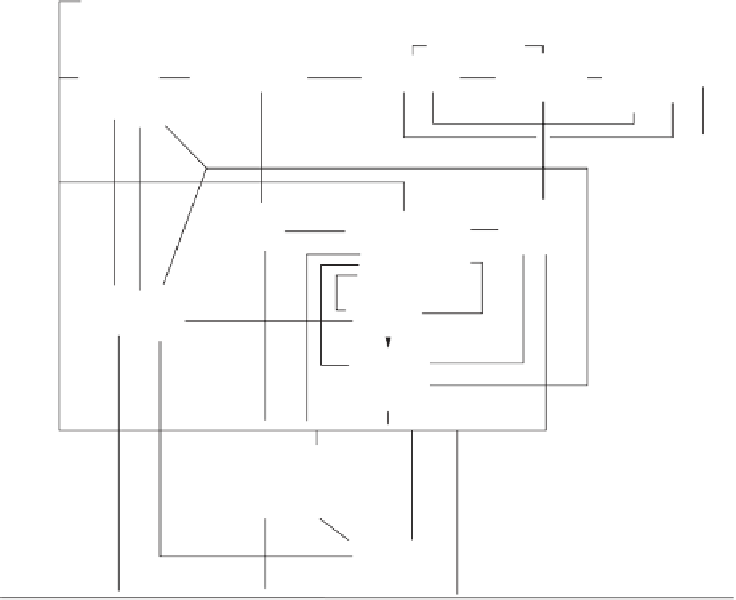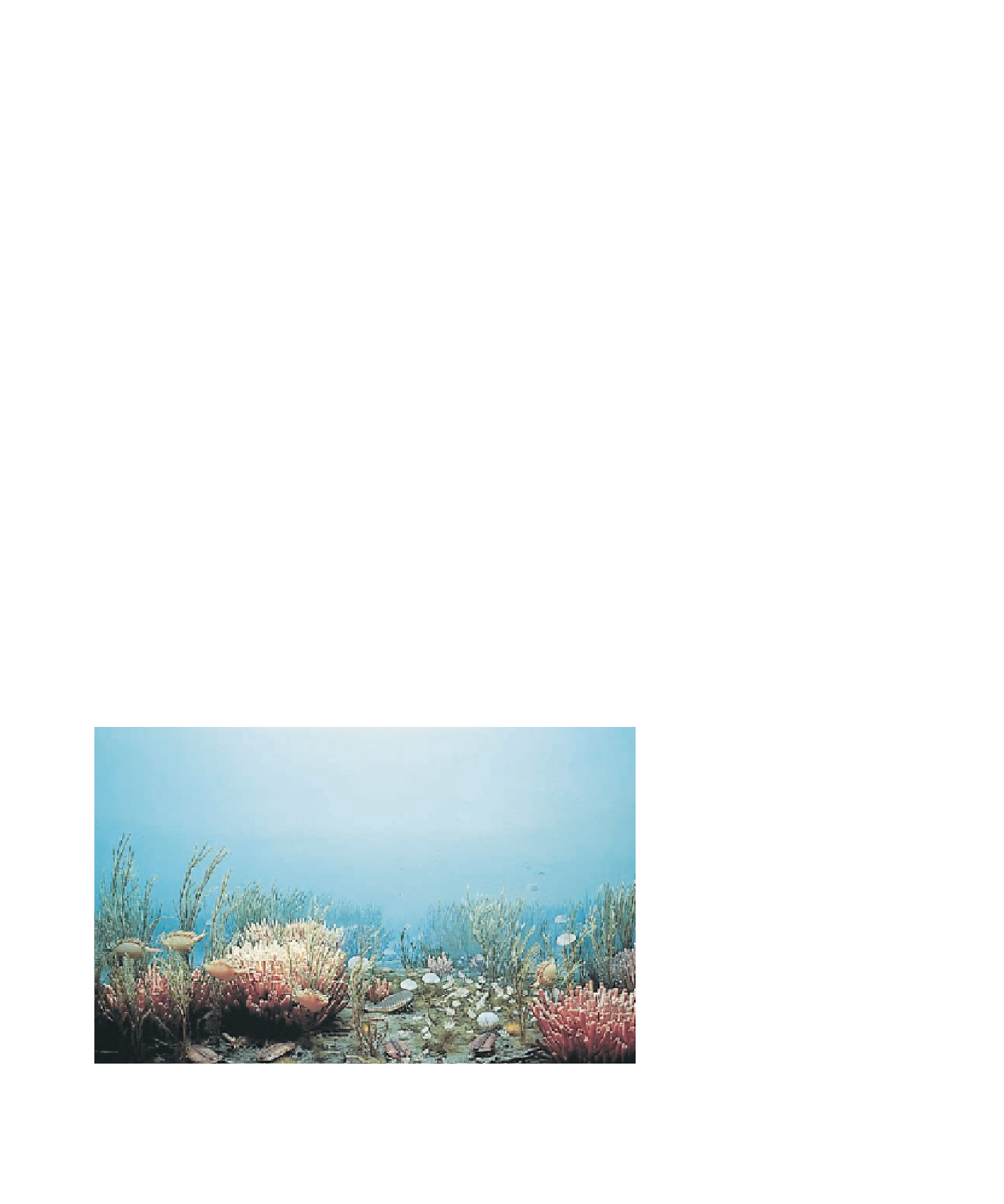Geology Reference
In-Depth Information
Archaeocyathids went extinct at
the end of the Cambrian.
The rest of the Cambrian
fauna consisted of representa-
tives of the other major phyla,
including many organisms that
were short-lived evolutionary
experiments. As might be expected
during times of adaptive radiation
and evolutionary experimenta-
tion, many of the invertebrates
that evolved during the Cambrian
soon became extinct.
No discussion of Cambrian life
would be complete without men-
tioning one of the best examples
of a preserved soft-bodied fauna
and fl ora: the Burgess Shale biota.
As the Sauk Sea transgressed from
the Cordilleran shelf onto the
western edge of the craton, Early
Cambrian-age sands were covered
by Middle Cambrian-age black
muds that allowed a diverse soft-
bodied benthonic community to
be preserved. As we discussed in
the Introduction, these fossils were
discovered in 1909 by Charles D.
Walcott near Field, British Colum-
bia, Canada. They represent one of
the most signifi cant fossil fi nds of
the 20th century because they con-
sist of impressions of soft-bodied
animals and plants that are rarely
preserved in the fossil record
(
Light
Water, sediment,
organic detritus
Zooplankton
Photic
zone
Nutrients
(surface
waters)
Small
predators
Larger
predators
Phytoplankton
Herbivores
Excretion
Dead
plants
Dead
animals
Dissolved and
suspended
organic matter
Deep
water
Predation
Nutrients
(deep)
Bacteria
Pelagic
animals
(deep)
Benthos
suspension, deposit
feeders, predators
Seafloor
Bacteria
Permanent deposit
◗
Figure 21.3
Marine Food Web Marine food web showing the relationship between the
producers (phytoplankton), consumers (herbivores, small and large predators, pelagic animals,
and benthos), and decomposers (bacteria).
Figure 21.6).
In recent years, the recon-
struction, classifi cation, and inter-
pretation of many of the Burgess
Shale fossils have undergone a
major change that has led to new
theories and explanations of the
Cambrian explosion of life. Recall
that during the Neoproterozoic,
multicelled organisms evolved,
and shortly thereafter animals
with hard parts made their first
appearance. These were followed
by an explosion of invertebrate
groups during the Cambrian,
many of which are now extinct.
These Cambrian organisms repre-
sent the root stock and basic body
plans from which all present-day
invertebrates evolved.
◗
◗
Figure 21.4
Reconstruction of a Cambrian Marine Community Reconstruction of a Cambrian
marine community showing fl oating jellyfi sh, swimming arthropods, benthonic sponges, and
scavenging trilobites.





























































Search WWH ::

Custom Search